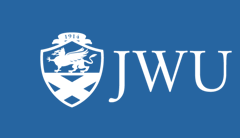Document Type
Conference Proceeding
Abstract
Shifting from an industrial model of education to a model that best provides students with differentiated instruction (Tomlinson, 2014) requires educational philosophical change (Fullan, 2014) as well as innovation diffusion (Rogers, 2003). The problem is not the amount of research that exists on differentiation, the diffusion of innovations, or the change process. The problem is what new technological pedagogical content knowledge (Koehler & Mishra, 2008) do educators need to make this change process happen? How is this knowledge communicated to finally change the “fundamental processes of schooling” (Elmore, 1996, p. 4)?
This sequential, mixed-methods study addressed the following condensed research questions: What are in-service teachers’ perceived knowledge levels in relation to technological pedagogical content knowledge (TPACK)? What are teachers’ perceived levels of comfort to differentiate instruction (DI)? Is there a significant relationship among perceived levels of comfort to DI and TPACK? What are the relationships between educators’ TPACK and DI self-efficacy and the following demographics: grade level, years of teaching, adopter category, device-student ratio, professional development hours in technology or DI, class size, certification(s), and educational background?
A questionnaire with open-ended questions provided quantitative and qualitative data (N=72). On a 5-point (SD – SA) Likert scale, pre-kindergarten to grade 12 teachers self-perceived TPACK ranged from 3.46 to 4.00. The educators’ self-efficacy to DI (5- point; Not Confident-Very Confident) was 4.01 and DI with technology (DI-T) was 3.16. Grade 8-12 teachers demonstrated significantly higher TPACK and self-efficacy to DI than pre-kindergarten to grade 4 teachers.
Of the respondents, 22% were categorized as innovators and 32% as early adoptersconsidered teacher leaders. Both groups demonstrated more confidence with DI-T than later adopter categories. Even with significant correlation between TPACK and DI (r=.47, r 2= .22; p < .001), TPACK and DI modeling ranged from 2.20 (teachers) to 1.75 (teacher leaders) and from 2.32 to 2.03 respectively (1=25% or less to 4=76-100%).
Qualitative themes confirmed the problem. Even though TPACK and self-efficacy to DI were relatively strong, these innovative practices were being rejected. Thus, recommendations identified specific professional development needs, and for educational systems to create communication channels to more rapidly diffuse innovational pedagogies.
Repository Citation
Millen, Robin A. and Gable, Robert, "New Era of Teaching, Learning, and Technology: Teachers’ Perceived Technological Pedagogical Content Knowledge and Self-Efficacy Towards Differentiated Instruction" (2016). K-12 Education. 34.
https://scholarsarchive.jwu.edu/k12_ed/34


Comments
Paper presented at the annual meeting of the New England Educational Research Organization, Portsmouth, NH, April, 2015